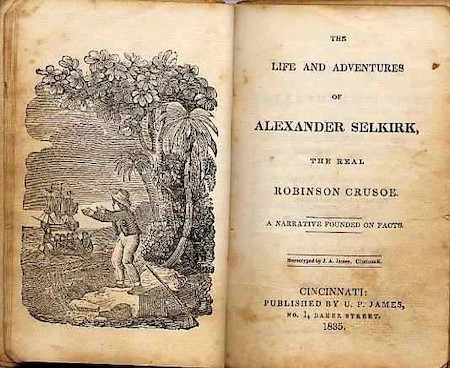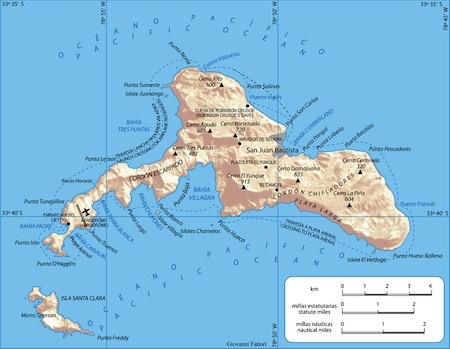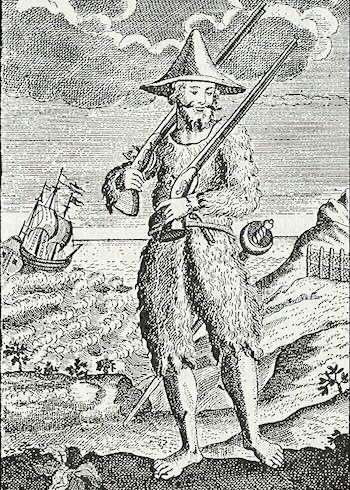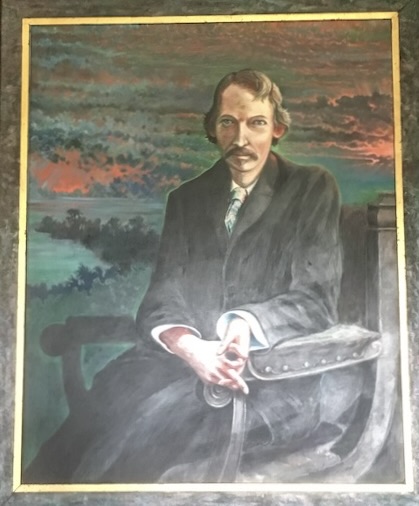 |  |
By Greg Niemann

One of the oldest and longest-enduring erroneous legends about the land called California is that many Europeans believed (Baja) California was an island. Mostly it was a case of wishful thinking and people ignoring facts that ran counter to accepted beliefs.
When you consider that the entire American continent was but a “speed bump” to those Europeans who wanted to sail to the Orient and back with ships laden with riches, you understand. For years mariners and explorers searched in vain for a “Northwest Passage” or the fabled “Strait of Anian” to get to the other side of North America.
The Spanish under Cortes had already crossed the continent and were to establish Acapulco on the South Sea (Pacific Ocean) as the departure point to Manila in the Philippines. The long gulf to the north, separating Baja California from the mainland, lended itself as a possible entrance to a more direct route and could perhaps even tie in with the Northwest Passage. It was wishful thinking that lasted almost two centuries even though numerous explorers had proved it was a peninsula.
Thus, the entirety of the Baja California peninsula was fantasized as an island.
However, there are also a couple other fantasies about alleged Baja islands that have endured. One is that the self-sufficient castaway Robinson Crusoe spent his time isolated on an island off Baja California.
Another is that Robert Louis Stevenson’s immortal book “Treasure Island” was inspired by islands off the northern Baja coast.
Robinson Crusoe

It is true that the real Robinson Crusoe character, the man who was the inspiration for the fictional hero of Daniel Defoe’s timeless 1719 novel “The Life and Surprising Adventures of Robinson Crusoe” did spend some time in Baja California. But what is not true is the rumor that islands off Baja California provided the setting for the fictional island.
Seaman Alexander Selkirk, later immortalized as Crusoe, was born in Fife, Scotland in 1676 to the son of a shoemaker and tanner. Considered an unruly youth, he joined several buccaneering expeditions into the South Pacific Ocean. He participated in one such expedition that was headed by the English privateer and explorer William Dampier. That particular fleet of pirates left Kinsale, Ireland on September 11, 1703 for the new world.
Selkirk’s ship, the “Cinque Ports,” captained by a Thomas Stradling, stopped to resupply on the island of Mas a Tierra, part of the Juan Fernandez group of islands some 400 miles off the coast of Chile. Selkirk felt the ship was unworthy and asked to be left there on the island rather than risk continuing aboard. His suspicions proved to be correct as the ship foundered shortly thereafter off the coast of Peru.
Meanwhile the marooned Selkirk became an adept hunter and resourceful castaway living alone off the land for over four years.
He was rescued in February 1709 by some English buccaneers, this expedition of three ships led by Captain Woodes Rogers and piloted by the aforementioned pirate William Dampier. They put in at the island for some fresh goat meat and were startled to find Selkirk who had been marooned there for a total four years, four months. Rogers described him as having the appearance of “a wild man, clothed all in goatskin, who seemed wilder than the original owners of his apparel.”
Rogers wryly referred to Selkirk as the “governor of the island” but appreciated the castaway’s ability to catch two or three goats a day and help restore the health of Rogers’ men, many of whom had developed scurvy.
Woodes Rogers offered Selkirk the position of second mate of his flagship “Duke,” and they resumed their pirating. They headed on to the tip of Baja California and continued to pillage Spanish ships. Rogers later gave Selkirk command of one of their prize ships.

Among other misdeeds, Selkirk helped Rogers capture the prized Manila galleon “Nuestra Señora de la Encarnación y Desengaño” in December 1709 at Cabo San Lucas. The 193-man “Desengaño” was renamed the “Bachelor” and Selkirk became its sailing master.
It was Selkirk’s incredible story of survival that became big news in England, and also became Defoe’s inspiration. Defoe’s book went on to become the vision for generations of young people who dreamed of far-off adventure.
In 1996 Chile attempted to attract tourists by renaming Mas a Tierra Island, changing its name to Robinson Crusoe Island. And they named another of the Juan Fernandez islands Alexander Selkirk Island after the pirate whose only link with Baja California being that he helped pillage Spanish ships from the Cabo San Lucas area.
“Treasure Island”
Another Baja piece of fiction that has endured is that author Robert Louis Stevenson was inspired by Baja’s Todos Santos islands and that he wrote much of his famous book “Treasure Island” across the bay in Ensenada. Unfortunately, it too is another Baja myth.
Indeed, there is no evidence that the famous Scottish author had ever been in Baja California. He did live in Northern California for a while before going to Samoa where he died on Dec. 3, 1894. The sickly Stevenson lived for a time in Monterey, California and even got married in foggy San Francisco but moved to the sunnier Napa Valley for his health.
Later, back in a Scottish cottage “Treasure Island” emerged from a child’s impromptu imaginary map and a fertile mind admittedly inspired by Daniel Defoe and Washington Irving. Along with Baja, the speculation on the supposed model of the island itself runs from islands off Puerto Rico, Cuba, or the Shetland Islands. It is even said that the wild coastline around Monterey definitely had an influence, but that’s a long way from Baja.

The fictitious Baja connection apparently came about when Stevenson’s widow Fanny Stevenson moved to La Jolla, CA in 1904. She, her maid, and others joined mining engineer George Brown on Baja’s Cedros Island (Brown lived at the El Marmol onyx mine). She stayed with the Browns on the island for three restful months. On her return trip she leased a small ranch house in El Sauzal, six miles north of Ensenada.
George Brown’s daughter Margaret Brown Baldwin reminisced about meeting Mrs. Stevenson. From the San Diego Historical Society:
In 1903 we began coming up to San Diego for school. In the summer, however, we visited Cedros Island, where our father had started copper mining. It was on this first trip that we met Mrs. Robert Louis Stevenson, wife of the famous author, who had come down for a rest. She was a very nice little gray-haired lady. She later came to Ensenada and bought (leased) a rancho just outside the town at El Sauzal.
Over 25 years later a journalist from the East Coast was in Ensenada and came across old lease papers signed by Mrs. Robert Louis Stevenson and assorted papers written by members of Mrs. Stevenson’s party. Thinking she had a real scoop, the reporter assumed she had unpublished works by the famous author and also incorrectly assumed that the islands poking up across the bay were Stevenson’s inspiration for the popular Treasure Island. Her assumptions were later universally debunked.
It seems like there are a lot of people who want their local island to be the model for “Treasure Island.” Unfortunately, they weren’t Baja islands.
About Greg
Greg Niemann, a long-time Baja writer, is the author of Baja Fever, Baja Legends, Palm Springs Legends, Las Vegas Legends, and Big Brown: The Untold Story of UPS. Visit www.gregniemann.com.

I like Baja bound insurance because it’s so easy to buy mexican car insurance, prices are so...

Been going to baja for 45 years. This is best insurance company i have come accross.

Excellent service! Michelle made it so easy for me to purchase a 6 month mexican policy for all of...